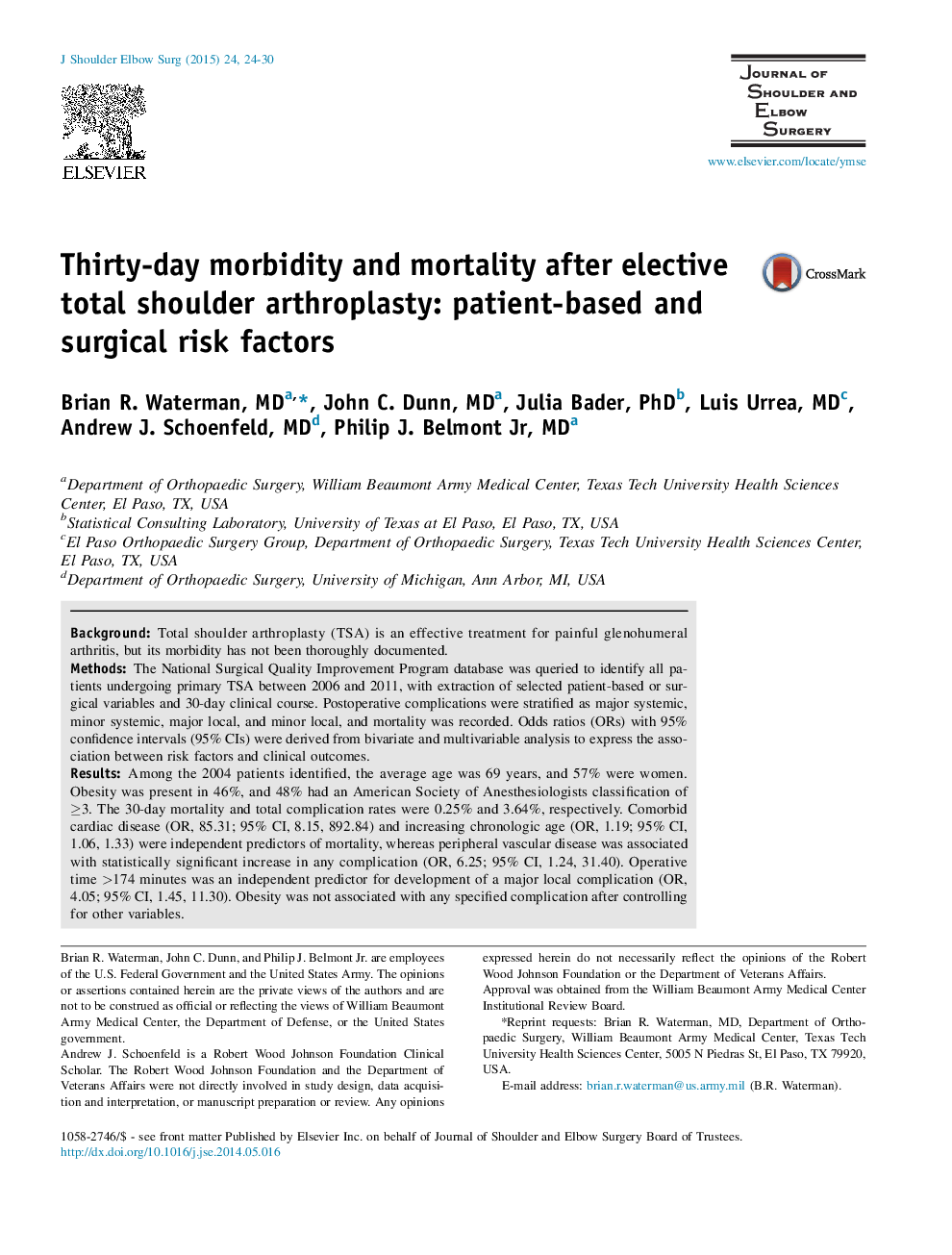| کد مقاله | کد نشریه | سال انتشار | مقاله انگلیسی | نسخه تمام متن |
|---|---|---|---|---|
| 4073798 | 1266991 | 2015 | 7 صفحه PDF | دانلود رایگان |
BackgroundTotal shoulder arthroplasty (TSA) is an effective treatment for painful glenohumeral arthritis, but its morbidity has not been thoroughly documented.MethodsThe National Surgical Quality Improvement Program database was queried to identify all patients undergoing primary TSA between 2006 and 2011, with extraction of selected patient-based or surgical variables and 30-day clinical course. Postoperative complications were stratified as major systemic, minor systemic, major local, and minor local, and mortality was recorded. Odds ratios (ORs) with 95% confidence intervals (95% CIs) were derived from bivariate and multivariable analysis to express the association between risk factors and clinical outcomes.ResultsAmong the 2004 patients identified, the average age was 69 years, and 57% were women. Obesity was present in 46%, and 48% had an American Society of Anesthesiologists classification of ≥3. The 30-day mortality and total complication rates were 0.25% and 3.64%, respectively. Comorbid cardiac disease (OR, 85.31; 95% CI, 8.15, 892.84) and increasing chronologic age (OR, 1.19; 95% CI, 1.06, 1.33) were independent predictors of mortality, whereas peripheral vascular disease was associated with statistically significant increase in any complication (OR, 6.25; 95% CI, 1.24, 31.40). Operative time >174 minutes was an independent predictor for development of a major local complication (OR, 4.05; 95% CI, 1.45, 11.30). Obesity was not associated with any specified complication after controlling for other variables.ConclusionsWhereas TSA has low short-term rates of perioperative complications and mortality, careful perioperative medical optimization and efficient surgical technique should be emphasized to decrease morbidity and mortality.
Journal: Journal of Shoulder and Elbow Surgery - Volume 24, Issue 1, January 2015, Pages 24–30
